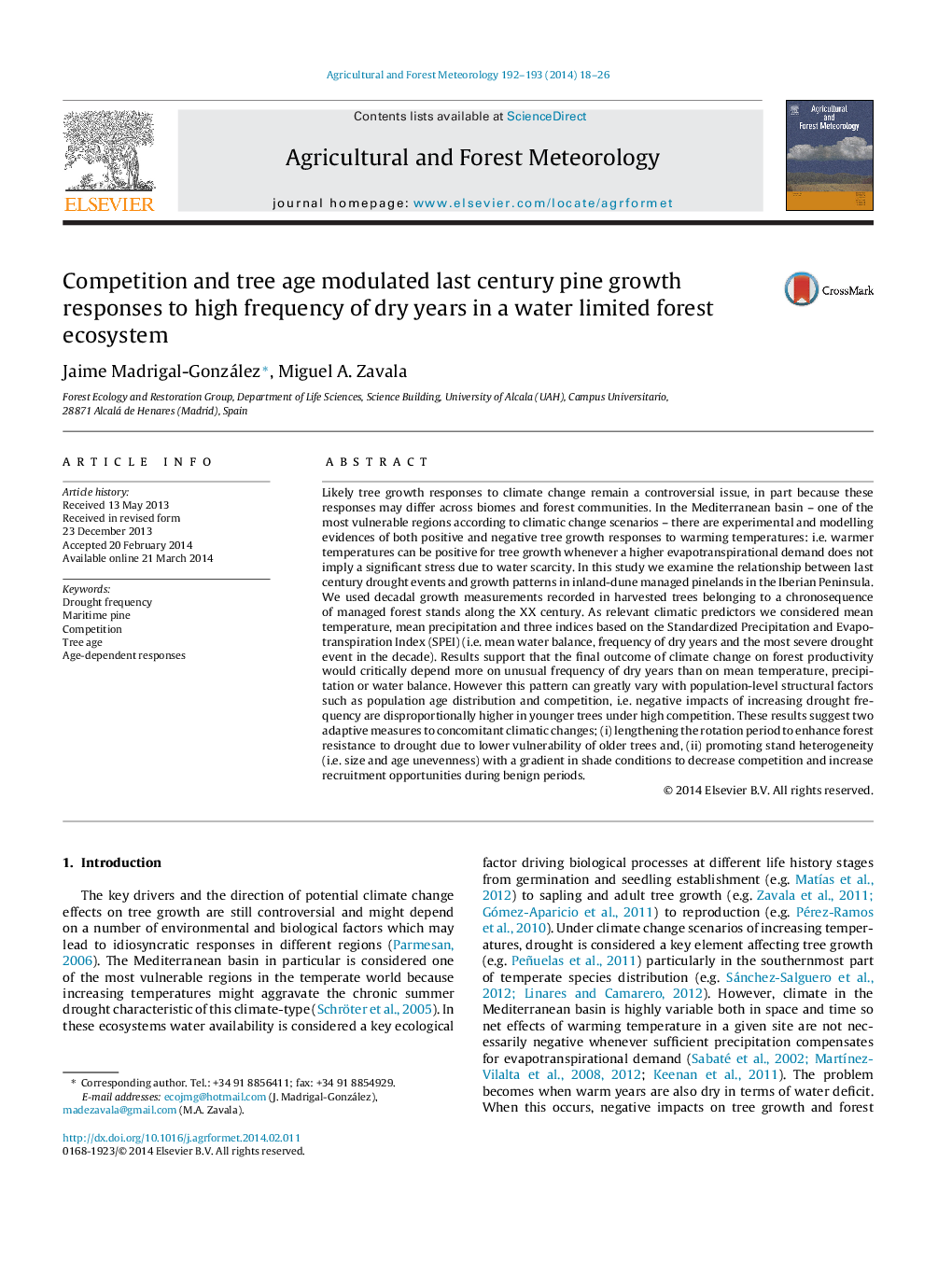| کد مقاله | کد نشریه | سال انتشار | مقاله انگلیسی | نسخه تمام متن |
|---|---|---|---|---|
| 81743 | 158336 | 2014 | 9 صفحه PDF | دانلود رایگان |
• Frequency of dry years explained pine growth decline along the 20th century.
• Tree growth responses to climate were age- and competition-dependent.
• Competition aggravated the effects of increasing frequency of dry years.
• Thinning and a heterogeneous tree age structure might enhance forest resistance.
Likely tree growth responses to climate change remain a controversial issue, in part because these responses may differ across biomes and forest communities. In the Mediterranean basin – one of the most vulnerable regions according to climatic change scenarios – there are experimental and modelling evidences of both positive and negative tree growth responses to warming temperatures: i.e. warmer temperatures can be positive for tree growth whenever a higher evapotranspirational demand does not imply a significant stress due to water scarcity. In this study we examine the relationship between last century drought events and growth patterns in inland-dune managed pinelands in the Iberian Peninsula. We used decadal growth measurements recorded in harvested trees belonging to a chronosequence of managed forest stands along the XX century. As relevant climatic predictors we considered mean temperature, mean precipitation and three indices based on the Standardized Precipitation and Evapotranspiration Index (SPEI) (i.e. mean water balance, frequency of dry years and the most severe drought event in the decade). Results support that the final outcome of climate change on forest productivity would critically depend more on unusual frequency of dry years than on mean temperature, precipitation or water balance. However this pattern can greatly vary with population-level structural factors such as population age distribution and competition, i.e. negative impacts of increasing drought frequency are disproportionally higher in younger trees under high competition. These results suggest two adaptive measures to concomitant climatic changes; (i) lengthening the rotation period to enhance forest resistance to drought due to lower vulnerability of older trees and, (ii) promoting stand heterogeneity (i.e. size and age unevenness) with a gradient in shade conditions to decrease competition and increase recruitment opportunities during benign periods.
Journal: Agricultural and Forest Meteorology - Volumes 192–193, 15 July 2014, Pages 18–26
